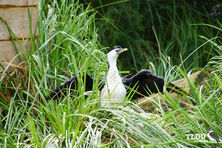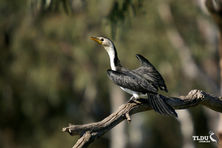
Shoppers Feedback:
Jan 17, 2017
Hello Ros,
I have now paid the invoice, but I would like to write to you just to say a big THANK YOU for getting me the Penguin!
The ChatterMate Penguin became a nice memory for me when I was in New Zealand, and I am so greatful to you for arranging so that I could have it! :-)
Thank you so much!!!!!!!!!!!
Regards,
Malin
Hi Ros,
Many thanks for your very kind email. I really appreciate your prompt reply!
I appreciate your advice regarding the decorations and customs. These are a gift for my daughter’s exchange student family so when she returns home on the weekend I will show her and see if she loves them as much as I do!
Thanks so very much again - I am truly grateful for your kind assistance.
Kind Regards
Bernadette
Ros,
Thanks again for the great customer service. It's a refreshing change!
Best regards,
Trevor
Hey Roz,
Thank you for your emails. Just loved my first order. The cute little Aussie bush critters are going to be used for an office Christmas decoration. My colleagues also liked them and talked about making an order to your site. I'll send you a photo when completed.
I'll be ordering more to send to my daughter's host family in America.
Fabulous service from you.
Kind regards,
Michelle
Thankyou. Order arrived today. One very happy grandson with his new beastly binoculars.
Regards,
Irene
- Home
- Wild Wonders
- Shop
- Aromas of Australia
- Australian Made
- Books
- Book Marks
- Christmas Decoration Sale
- Christmas Decorations
- Clocks
- Drink Holders
- Garden & Outdoor
- Gift Wrapping & Cards
- Home & Giftware
- Jewellery
- Keyrings
- New Products
- Pencils & Pen Holders
- Photo Frames
- Plush Toys
- Plush with Sound
- Sheepskin Rugs
- Stationery
- Stone Carvings
- Toys & Games
- Travel Goods
- Wedding
- Wild Figurines
- Wildlife Safety Products
- Wind Chimes
- Wine Charms
- View All Products
- Wildlife
- Australiana
- Explore
- Contact Us
Little Pied Cormorant

Quick Facts
| Length: | 58 cm |
| Height: | - |
| Weight: | - |
| Colour: | - |
| Habitat: | Fresh or salt water, open waterways and on the coast. |
| Food: | Wide variety of aquatic animals, from insects to fish. Favoured food is yabbies (freshwater crayfish |
| Predators: | - |
| Status: | Secure in all states and territories in Australia |
The Little Pied Cormorant is one of the most common of Australia's waterbirds, occurring on water bodies of almost any size. It is entirely black above and white below. The face is dusky and, in adult birds, the white of the underside extends to above the eye. Immature birds resemble the adults except there is no white above the eye.
The Little Pied Cormorant resembles the Pied Cormorant, but is easily distinguished by its smaller size and proportionately shorter bill The Pied Cormorant also has an orange-yellow face patch and black thighs.
The Little Pied Cormorant is found throughout Australia.
The Little Pied Cormorant is at home in either fresh or salt water. It is often seen in large flocks on open waterways and on the coast, especially where large numbers of fish are present. On inland streams and dams, however, it is often solitary. The Little Pied Cormorant mixes readily with the similar sized Little Black Cormorant.
Little Pied Cormorants feed on a wide variety of aquatic animals, from insects to fish. On inland streams and dams they turn to their most favoured food: yabbies (freshwater crayfish). These are caught by deep underwater dives with both feet kicking outward in unison. Other crustaceans are also taken, with shrimps being a large part of their diet in winter months.
Little Pied Cormorants breed either in colonies or, less commonly, in single pairs. The nest is a flat platform of sticks, lined with green leaves and is usually placed in a tree. Both adults share in egg incubation and care of the young.
Last Updated: Thursday 18th July, 2013
BirdLife Australia - www.birdlife.org.au
BUSH e-TELEGRAPH
Signup for our monthly newsletter the "e-Telegraph"
Quick Links
Home | The Beginning | About The Land Down Under | Wild Wonders | Advertise on Wild Wonders | Christmas Decoration Sale | Christmas Tree Decorations | Drink Holders | Plush with Sound | Stone Carvings | Wildlife Wine Charms | Freebies | Australian Wildlife | Help Our Wildlife | Australiana | Photo of the Month | Explore The Land Down Under | Contact Us | Legal Notices


